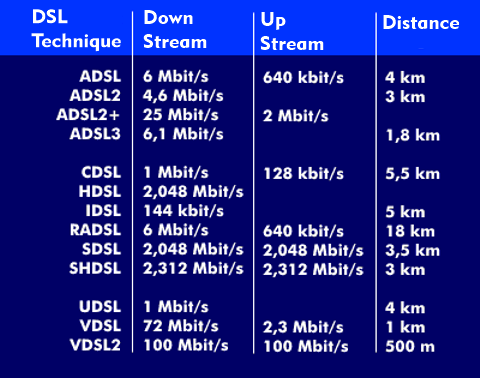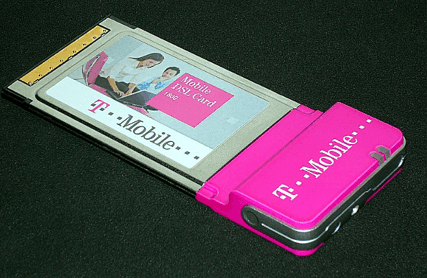digital subscriber line (DSL)
Digital Subscriber Line(DSL) or xDSL covers all processes for digital broadband use of telephone cables in the access area. All technologies were developed specifically for the existing copper pairs ofsubscriber lines(ULLs) in the local network. In the various DSL versions, the transmission rate is determined by the DSL process, but is significantly influenced by the line quality.
The different DSL variants include ADSL (Asymmetric DSL), ADSL2+ ADSL2+, IDSL ( ISDN DSL), RADSL (Rate Adaptive DSL), SDSL (Symmetrical DSL), HDSL (High Bit Rate DSL), VDSL (Very High Speed DSL), VDSL2, CDSL (Consumer DSL) and SHDSL (Single Pair High Bit Rate DSL). With all DSL variants, transmission quality decreases as the distance increases. For this reason, this technology is only of interest in the access area, since the bridgeable distances from the subscriber to the local exchange range from a few hundred meters to a maximum of a few kilometers, and telephone lines already exist in the local network area.
DSL technologies use copper twisted pairs
The basis for all DSL methods is twisted copper pairs in the access area. However, the bandwidth restriction of 3.1 kHz, which is common in analog telephone connections, has been lifted and the entire bandwidth of the copper twisted pair is made available to the DSL processes. This is possible because in DSL systems, data is transported from the exchange via a high-speed network; to this end, an xDSL modem is installed in the exchange and at the customer's premises. This is used for signal processing by means of special coding and modulation processes. DSL is located at the physical layer and uses 2B1Q coding, carrierless amplitude-phasemodulation( CAP) and the multitone method( DMT) as coding methods, among others.
In parallel with the DSL method used, it must also be possible to use the copper twisted pair of the local exchange line for normal telephone traffic. For this purpose, a narrowband bidirectional transmission channel is provided via splitter technology in the local exchange and at the subscriber's premises. This separates the DSL signals and the telephone signals. The subscriber can therefore make telephone calls and transmit data via xDSL techniques at the same time.
The different transmission rates
Procedurally, there are different DSL technologies. These are application-specific and differ in the transmission rates to and from the exchange. The transmission direction from the exchange or DSLAM to the subscriber is referred to as downstream, while the reverse direction is referred to as upstream. If the transmission rate is the same in both directions, we speak of symmetrical DSL processes; if they are not the same, we speak of asymmetrical processes.
There are various transmission techniques and developments that increase data rates. These include line bonding, in which several DSL lines are bundled together, phantom operation, and vectoring, which compensates for interference caused by crosstalk between neighboring copper pairs. And as a further method, G.fast, whose data rate is far higher than that of VDSL2.
DSL technologies are suitable for interactive distribution services and video services, for the use of multimedia TC services such as video conferencing, for fast access to the Internet, and for companies and private individuals with high data volumes. Today, most DSL connections are billed at a flat rate. Time and volume tariffs are mostly only common in hard-to-access connection areas.


